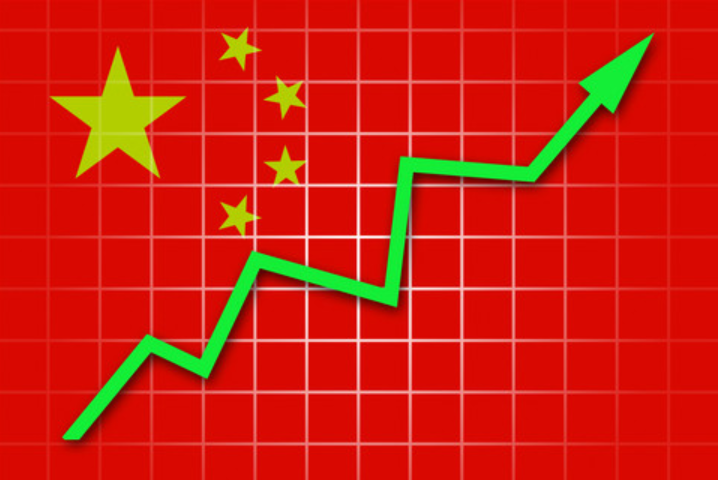Merrill har analyseret Kinas hæsblæsende udvikling i de 50 år, der er gået siden præsident Richard Nixons besøg, der normaliserede forholdet mellem USA og Kina. Forholdet i dag er præget af handelskrig, som præsident Donald Trump tabte, men erhvervslivet fokuserer på en helt anden udvikling end de amerikanske politikere. Den kinesiske vækst har været så kraftig, og Kinas rolle i verdens økonomi er blevet så stor, at investorerne må betragte Kina som et nødvendigt marked, mener Merrill, f.eks. også for at kunne være med i den højteknologiske udvikling og alt, der har med den militære udvikling at gøre. Men Kina er ikke et let marked for investorer. En mulighed er at investere i store, internationale selskaber, der er stærkt positioneret i Kina, mener Merrill. Analysen rummer en række data over, hvor stærk Kina er blevet på en række områder, f.eks. står Kina for næsten 30 pct. af verdens produktion, og der strømmer næsten lige så mange investeringer til Kina som til USA. Kina står for en tredjedel af verdens luksusmarked og bilmarked. Kina er stærkt på vej til at blive større end USA på næsten alle markedsområder.
From Détente to Decoupling: Investing in China 50 Years after Nixon’s
Visit
Fifty years ago this month, President Nixon made a historic trip to China that would change
the world. The visit in 1972 jumpstarted the normalization of relations between the U.S. and
China, and nudged the isolated and impoverished nation to “open” to the West. Indeed, by
the end of the decade, the U.S. and China had formally normalized relations, China had
entered the United Nations, and, under the leadership of Deng Xiaoping, economic reforms,
including greater contacts with the West, had become the norm.
The country Nixon landed in was vastly poor, economically backward, centrally controlled
and largely cut off from the rest of the world. Beijing’s ties with Wall Street were nonexistent. The following decades, however, would be game-changing for not only China but
also the rest of the world, the U.S. included.
Between 1979 and 2018, real annual GDP growth in China averaged a stunning 9.5%, a
pace described by the World Bank as “the fastest sustained expansion by a major economy
in history.” Since liberalizing foreign trade and investment in the late 1970s, China’s GDP
has roughly doubled every eight years in real terms, lifting some 800 million people (nearly
2.5 times the population of the U.S.) out of poverty according to the Congressional
Research Service.
Real growth, not unexpectedly, has slowed over the past few years,
although based on purchasing power parity (PPP) rates, China’s economy is now the
largest in the world, an estimated 18% greater than America’s in 2021 according to the
International Monetary Fund. (Measured in nominal U.S. dollars, however, China’s GDP in
2021 was $16.8 trillion, or 74% of the U.S. economy).
The numbers speak for themselves
As one of the largest economies in the world today, there’s hardly a macro indicator or
sector/industry not touched by or under the influence of China. Here’s a sampling of the
stunning global reach of the Middle Kingdom:
• China is a manufacturing superpower, contributing 28.7% of
global manufacturing in 2019.1
• As the world’s top exporter, China accounted for 14.7% of all
the world’s goods in 2020. 1
• China is the top export partner for 37 countries.2
• China displaced the U.S. as the European Union’s top goods
trading partner in 2020.2
• China consumes the most copper, steel, aluminum, concrete,
electricity and water globally.
• China was the 2nd largest recipient of foreign direct
investments at $149 billion in 2020, behind U.S. ($156
billion).1
• Some 372,532 Chinese students studied abroad in
2019/2020, the largest global cohort.3
• Pre-pandemic (2019) Chinese tourists spent $260 billion,
exceeding all other nationalities.4
• China’s share of the global luxury goods market was 32% in
2020, according to Euromonitor.
• 32% of global auto market; its share of the global electric
vehicle market was 41% in 2020. 5
• S&P 500 companies earn 7.3% of revenues in China, the
largest non-U.S. revenue base. 5
• China makes up 30% of MSCI EM and is the 4th largest
weighting in MSCI ACWI (3.5%). 5
• China is home to 2 of the top 10 most valuable Global Brands
according a BrandZ report.
• China: 1 billion internet users; 81 million smartphones shipped
in Q3 2021 according to IDC.
• China’s spending on Research & Development grew 10.3% to
$378 billion in 2020. 5
• China emits 30.7% of global emissions—the world’s largest
emitter since 2006 (BP).
China: Both promise and peril for investors
While China’s decades-long rise has been relatively benign and beneficial to U.S. investors,
the tables have turned. A new geostrategic landscape has emerged over the past few
years; U.S.-Sino ties are less sweet, more sour. While bilateral ties remain thick, the risk of
decoupling is real.
When it comes to investing in China, it’s best to remember Deng Xiaoping’s famous
dictate: “cross the river by feeling the stones.” In other words, proceed incrementally, be
adaptive to changing circumstances, and be amendable to all available options. Move
step-by-step and expect the unexpected.
As such, within our asset allocation framework, we are currently neutral on the Emerging
Markets (EM), in part due to China’s outsized weighting in the main EM index and the risks
to Equities associated with U.S.-Sino trade tensions, moderating real growth prospects in
China, and the recent rash of regulatory restrictions from Beijing.
All of this makes for a slippery investment backdrop for investors looking to gain exposure
to China. “Crossing the river while feeling the stones” means deploying various investment
strategies, ranging from direct exposure via Chinese American Depositary Receipts to
deploying active Chinese fund managers that allow greater access to Small- and Mid-cap
firms in China. The former is risky considering the current regulatory environment, while
the latter is more alpha-generating but also highly volatile.
Indirect China investment plays pivot on commodities for one, with China a major producer
and consumer of various commodities, ranging from rare earth minerals to aluminum.
Another way to consider gaining exposure is via Large-cap U.S. and European
multinationals with significant exposure to China’s emerging middle class—think luxury
brands, food and beverage leaders, high-end automobile manufacturers, travel and leisure,
among various sectors.
Finally, technology, innovation and digitalization are also key avenues by which to invest in
China. As we have noted in the past, the post-pandemic global economy is increasingly
shifting toward greater automation and digitization in activities such as media, retail,
health care and manufacturing, with the world’s two largest economies—the U.S. and
China—at the forefront.
For investors, this should mean long-term growth opportunities across information
technology software and services, chipmakers, semiconductor capital equipment and
hardware applications such as networking equipment, cloud servers, electric vehicles and
industrial robots.
The growing geopolitical rivalry should also help boost defense sector
spending on advanced military hardware such as hypersonic missiles and anti-satellite
weapons, as well as on enhanced cyber capability. We believe Equities most closely tied to
these future trends should remain longer-term market leaders as we move further into the
new decade.
In the end, the 50th anniversary of Nixon’s historic touchdown in Beijing serves as a timely
reminder of China’s evolved, and now outsized, influence on the global capital markets.







